!Developing cheap medicines using genetically modified silkworms
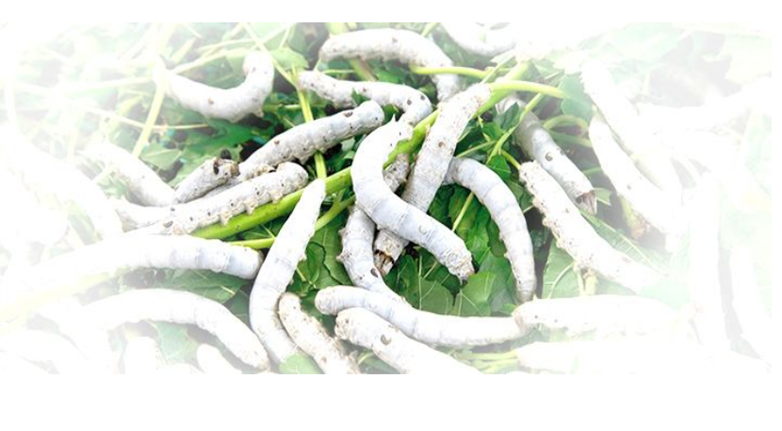
We are now on the cusp of a new phase in the ancient field of sericulture, where advanced research is being conducted using genetically modified silkworms, enabling the creation of new varieties of medicinal products and improving the silk industry as well. The National Institute of Plant Growth and Nutrition Science in Tsukuba, Ibaraki Prefecture, is among the leading centers focusing on this type of innovative research.
Harnessing silkworms in protein production
The National Institute of Plant Growth and Nutrition Science is one of Japan's major biotechnology bodies, founded in 2001. One of its major projects is focusing on exploiting silkworms' amazing abilities to produce unusual proteins by stimulating protein production that does not occur naturally. Cosmetics containing genetically modified proteins from silkworms have been introduced to the market, and the focus is now on using silkworms to manufacture safe and affordable medical products.
Silkworm farming, where silkworms are also known, originated in China to produce silk in the 15th century BC, and moved to Japan around the 2nd century. At the beginning of the 20th century, Japan was the world leader in silk production, but the development of synthetic fibers and the rise of industrialization made competition difficult for small Japanese producers. Currently, China, India and Thailand are the major silk manufacturing countries.
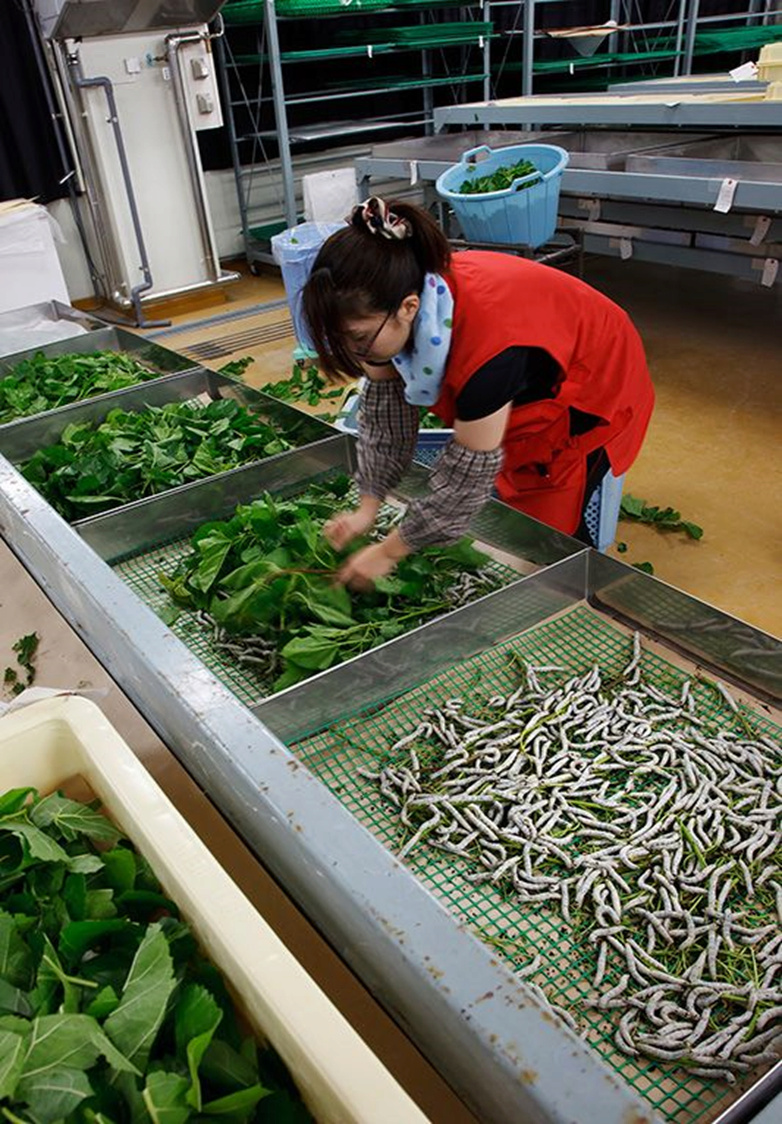
The National Institute of Plant Growth and Nutrition Sciences breeds several species of silkworms, which provides the two benefits of research and conservation of silkworm species.
There are more than 600 species of silkworms in Japan, including genetically modified species. Perhaps one of the common characteristics of all types of silkworms is that they do not develop the ability to fly, unlike other insects, even after the larvae mature and emerge from their cocoons.
Silkworms are selectively bred, or “domesticated,” over several thousand generations of worms, which has become a major advantage in efforts to make transgenic silkworms a commercial product. Like all genetically modified organisms, transgenic silkworms are subject to controlled Strict and within the limits of the Cartagena Protocol (the relevant Japanese law is the Act: “Conservation and Permanent Use of Biodiversity through Regulations on the Use of Genetically Modified Organisms.” A law was also enacted in February 2004 to control the impact of genetically modified organisms on plants and animals in the wild) . The fact that silkworms cannot fly ensures that none of these genetically modified species will escape into the wild and thus not mix with natural species.
Silkworms make their cocoons about a month after hatching, and these worms produce large quantities of proteins that are used as raw materials in manufacturing cocoons. Different types of proteins are produced in different places of the silk gland.
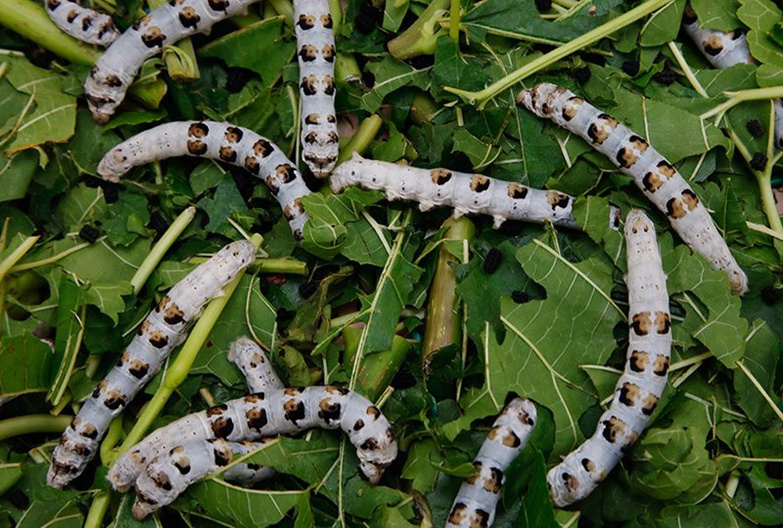
Silkworms lay 300-400 eggs at a time. The size of one egg immediately after hatching is the size of a small piece of silk thread, but after moulting four times its body weight increases by more than 10,000 times.
For example, the protein fibroin is produced in the back part of the gland, while the protein sericin is produced in the middle part of the gland. Silk thread is formed from a mixture of these two proteins: about 25% sericin and 75% fibroin. It is worth noting that the sticky protein sericin is soluble in water, and therefore boiling the cocoons in water allows the isolation of the fibrous protein fibroin alone as silk threads.
Genetic modification technology
At the National Institute of Plant Growth and Nutrition Sciences, silkworms are genetically modified by injecting two strands of DNA into the worms' eggs to create genetically modified worms. Thus, one of these two strands is the carrier DNA (foreign genes, which are deoxyribonucleic acid (DNA), are injected into the worms. Silk) which contains external genes other than those of the original worms that manufacture special proteins called genetically modified yeast that can change their location on the genome. The other chain is the helper DNA, which contains enzymes that help in the process of transferring the DNA to the worms' eggs. Two strands of DNA are injected into the eggs and the eggs are allowed to hatch normally. Subsequent offspring are then selected to select usable genetically modified silkworms.
Lead researcher Uchino Kiero says: “When we inject DNA, we are targeting the part of the egg that can differentiate into reproductive cells, which allows special features to be passed on to subsequent offspring.” “Here lies the technology that makes the production of large quantities of genetically modified silkworms possible.”
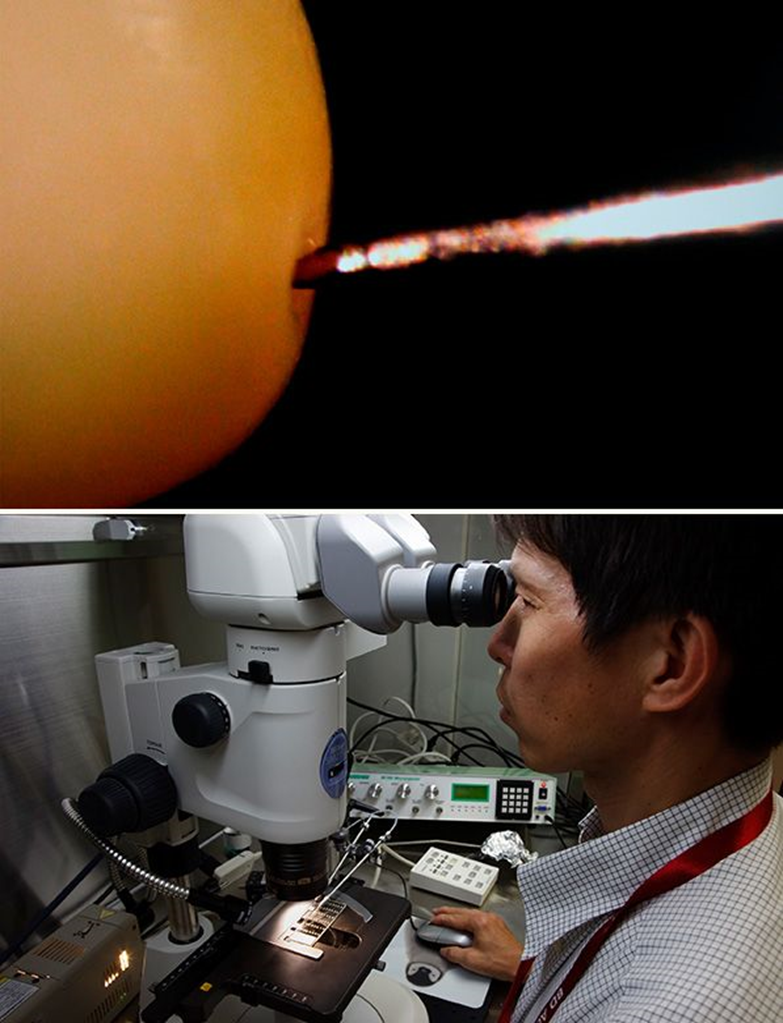
Silkworm eggs are about 1 mm in diameter. This is why the process of injecting the part of the eggs that will differentiate into reproductive cells with DNA requires great skills (picture above). Lead researcher Uchino Kiiro injects DNA into the eggs under a microscope (picture below).
Nine years ago, the National Institute of Plant Growth and Nutrition Sciences developed a new technique that allows researchers to control where exogenous genetic characteristics appear. Perhaps selecting the back part of the silk gland that produces the fiber-like protein fibroin made it possible to change the properties of the silk produced. Especially since researchers at that institute have succeeded in using this technology to develop silk threads with brilliant fluorescent colors.
When the middle part of the silk gland (the place where the sticky protein sericin is produced) is replicated, the resulting protein targets the internal structure of the sticky mucilage. Since sericin is water-soluble, it is very easy for proteins produced in this way to be extracted. Dr. Machi Hiroaki, head of the Genetically Modified Organisms Research Center, says: “We have developed species of silkworms in which sericin constitutes 98% of the proteins produced, and by combining these species with each other, a greater number of proteins can be obtained.”
The National Institute of Science, Plant Growth and Nutrition cooperates with the Gunma Center for Silk Technology, the Maebashi Agricultural Cooperative Society to produce genetically modified silkworms, and with a group of private sector companies. Dr. Machi expresses his optimism about the future, saying: “The silk industry in Japan is currently facing difficult times, but there is real hope that genetically modified silkworms will help get this industry back on its feet.”
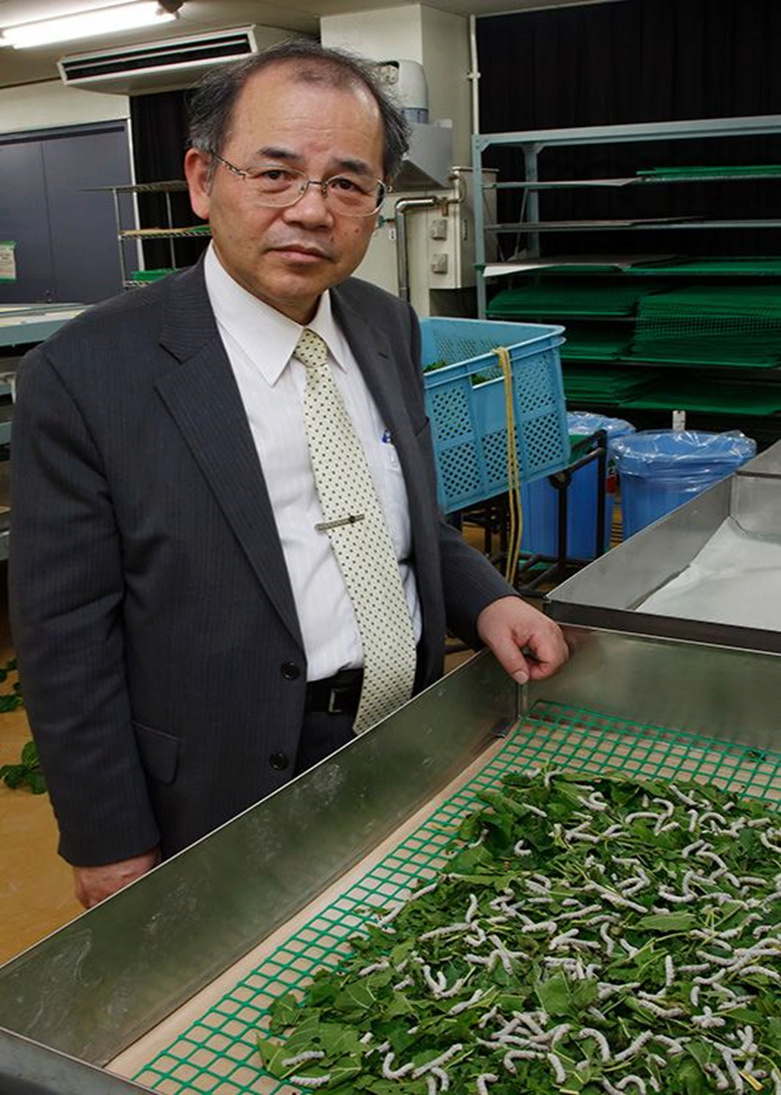
Dr. Machi Hiroiki, Director of the Center for Genetically Modified Organisms Research.
From cosmetics to drug development
The Bioimmunology Laboratories Company, based in the town of Fuji-oka in Gunma Prefecture, succeeded in producing a genetically modified silkworm that produces human collagen fibers (collagen is a protein that is involved in the structure of tissues such as skin and cartilage. It is believed that there are many types of human collagen only. The collagen used in industry is usually extracted from Cattle, pigs, fish and other types of animals) and with technical assistance from the National Institute of Science, Plant Growth and Nutrition, these collagen fibers have been used in the manufacture of cosmetics and put on the market.
In the past, it was difficult to extract collagen from natural sources, but now, with this new technology, about 10 milligrams of collagen can be produced from a single cocoon. To obtain this small amount of collagen, the cocoon is dissolved in water and then purified of fibers through filtration. However, some problems may accompany this process, such as the tendency of the sticky protein sericin to stick to the filter mesh, which leads to difficulty in filtration operations. Tomita Masahiro, Director of the Protein Engineering Department at ImmunoBiological Laboratories, has finally found a way that enables him to obtain 6-7 milligrams of collagen from every 10 milligrams of collagen produced.
The Bioimmune Laboratories Company has previously used human collagen in the production of cosmetics and other products. Collagen extracted from fish is used in most traditional cosmetics, but it leads to allergies in some people, and the use of human collagen has solved this problem. Another advantage of human collagen is the image enhancement that is likely to be obtained by establishing a relationship with silk and cocoons.
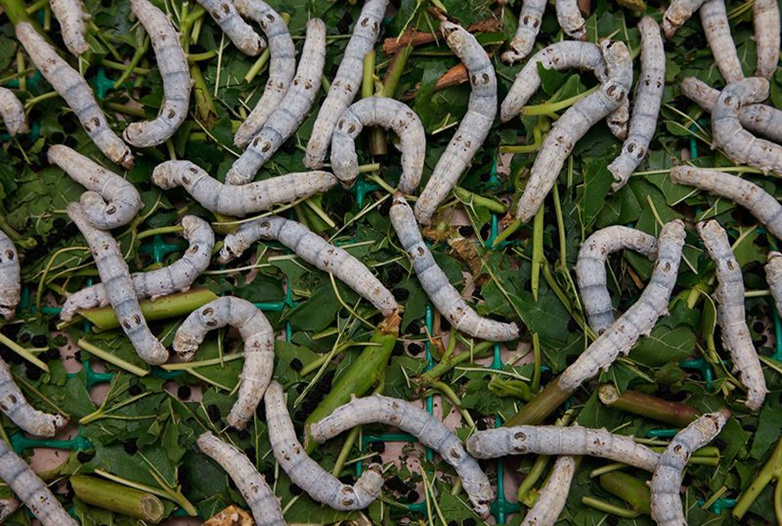
When introducing new materials into markets containing similar products, cost competitiveness is as important as quality. Researchers at ImmunoBio Laboratories believe that proteins extracted from genetically modified silkworms make some pharmaceutical products less expensive.
“In the future, we want to produce a series of pharmaceutical products and medicines that do not require prescriptions,” says Dr. Tomita. For example, many diagnostic materials rely on the use of antibodies produced in cell cultures or in mice. From an animal welfare standpoint, it is best to reduce our dependence on mice. The use of these farms is also not ideal due to the high production costs, and thus the final product will be more expensive. But all these problems could be solved if we could make antibodies from genetically modified silkworms instead of cell cultures and mice. After all, antibodies are just a type of protein. “So we are hopeful that in the future we will be able to make safe and affordable pharmaceutical products in this way.”
People have placed great value on the beauty and texture of silk for thousands of years. Proteins produced by genetically modified silkworms may soon be used to make safe and inexpensive medicines to help us stay healthy. This is another reason people may soon be moved to express gratitude to the silkworm.
Source : websites

